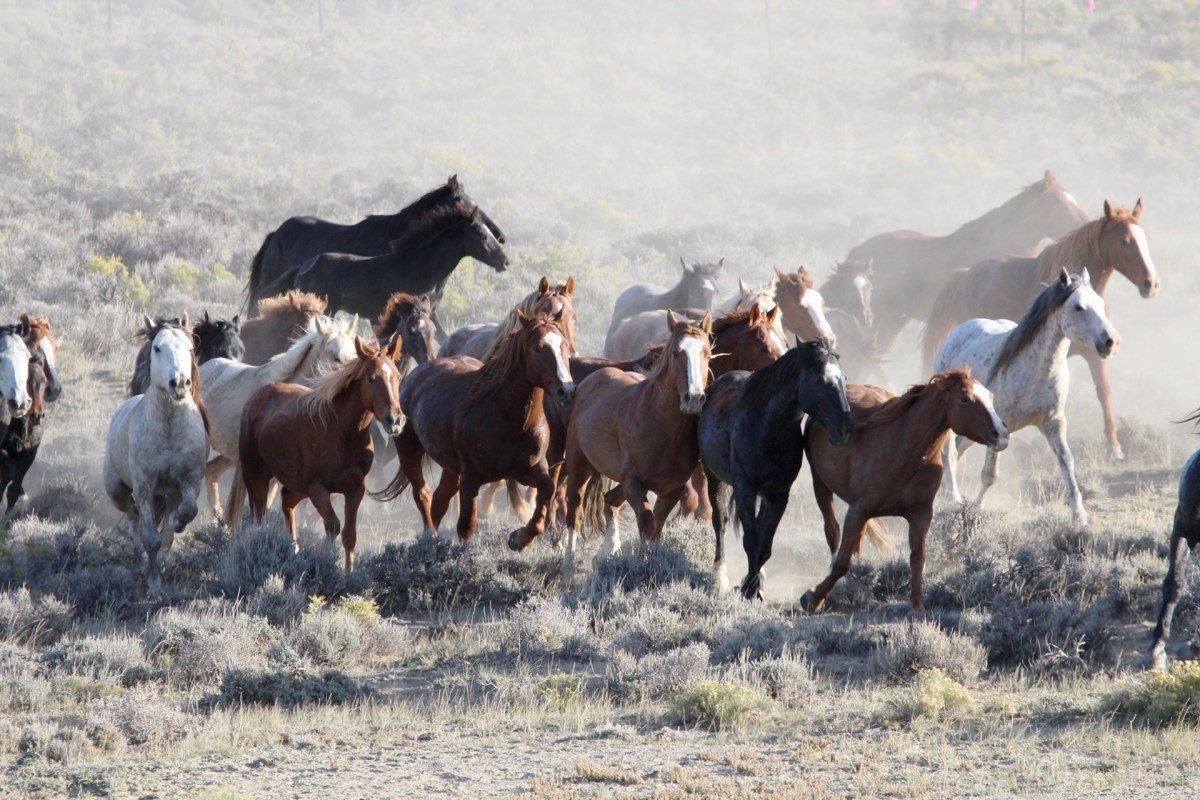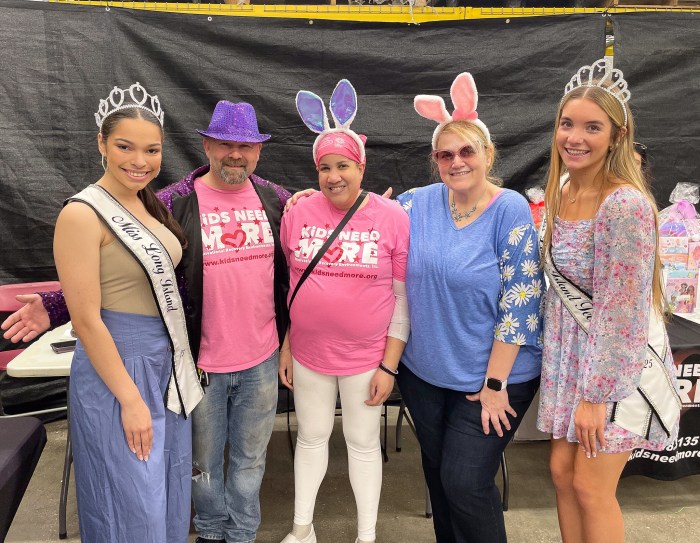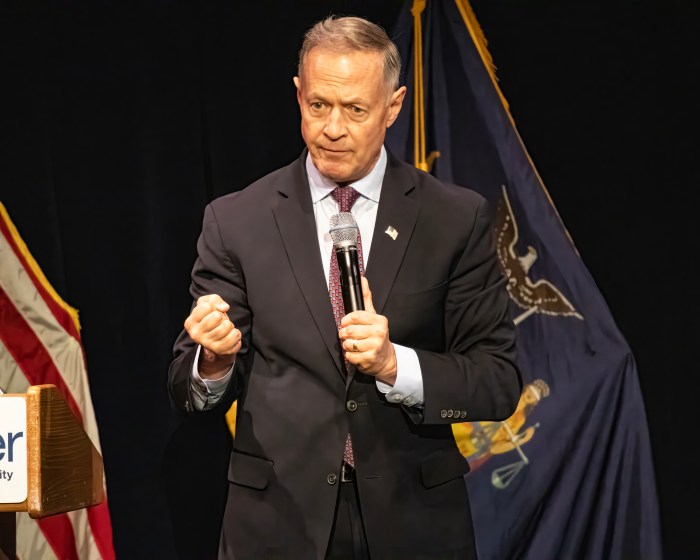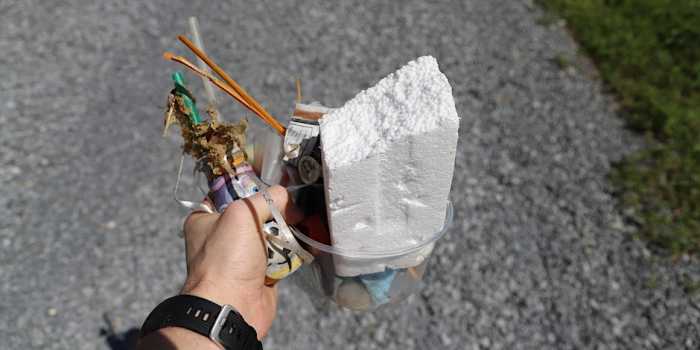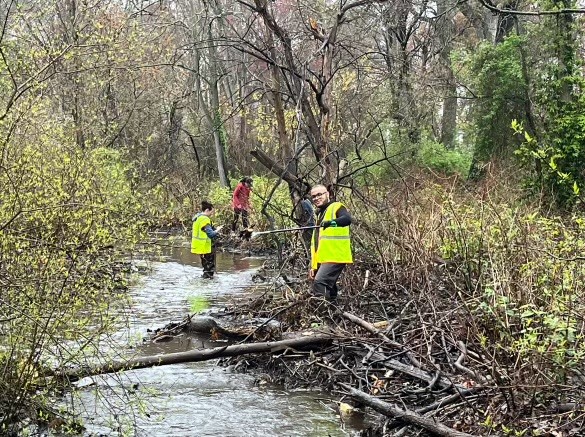Mustang. The word conjures images of muscle cars, but local activist Manda Kalimian reminds the public that its definition, wild horses, may soon be killed by the tens of thousands out West.
As founder of the CANA Foundation, a Locust Valley-based nonprofit horse advocacy group, she is one of few on Long Island trying to raise awareness of the complex environmental and animal rights issue playing out on public land more than 2,000 miles away. She and her fellow horse justice warriors say the plight of the mustang grows increasingly dire with each passing day that the Trump administration prioritizes business interests over natural concerns.
“This country was built on the back of the horse,” Kalimian says, invoking the species’ role throughout history. “We all want to be wild and free. If we lose our wild horses, who will be as a people?”
More than 43,000 rounded-up wild horses and burros are being penned at government holding facilities, costing taxpayers a reported $50 million annually. Over 70,000 more still roam rangelands in 10 Western states, including California, Nevada, Arizona, Utah and Oregon, according to the latest federal data.
For nearly a half century, the 1971 Wild Free-Roaming Horses and Burros Act has mostly protected mustangs sold to slaughterhouses for use as horse meat in other countries. The U.S. Bureau of Land Management (BLM), which oversees 177 herd management areas, has been herding wild horses with helicopters, storing them in pens and putting them up for adoption for the past two decades, although the adoption demand hasn’t kept up with the horse supply.
Newly appointed Interior Secretary Ryan Zinke, whose agency controls the BLM, backs plans to roll back the ban on euthanizing wild horses or selling them to slaughterhouses. Also in doubt is the future of contraceptive programs aimed at humanely controlling wild horse populations. Kalimian is among those lobbying against legislation currently pending in Congress that would pave the way for those changes.
“Clearly, the present policy is a disaster,” Zinke told Congress during his January confirmation hearing before making a show of riding a horse to his first day of work upon taking the reins of the Interior. “It’s enormously expensive. Kicking them out and then spending millions of dollars every year on a program that’s not working? Let’s work together to figure out how to fix it.”
This spring, President Donald Trump pitched his solution in BLM’s wild horse program portion of the proposed 2018 federal budget: “humane euthanasia and unrestricted sale of certain excess animals.” Under Zinke, who compared himself to a pirate ship captain during remarks at the National Petroleum Council in September, the BLM issued a statement backing the president’s proposal.
“With an expanded suite of management tools, the BLM can strengthen its efforts” to address the crisis, the agency said of the proposed resumption of euthanizing and slaughtering wild horses.
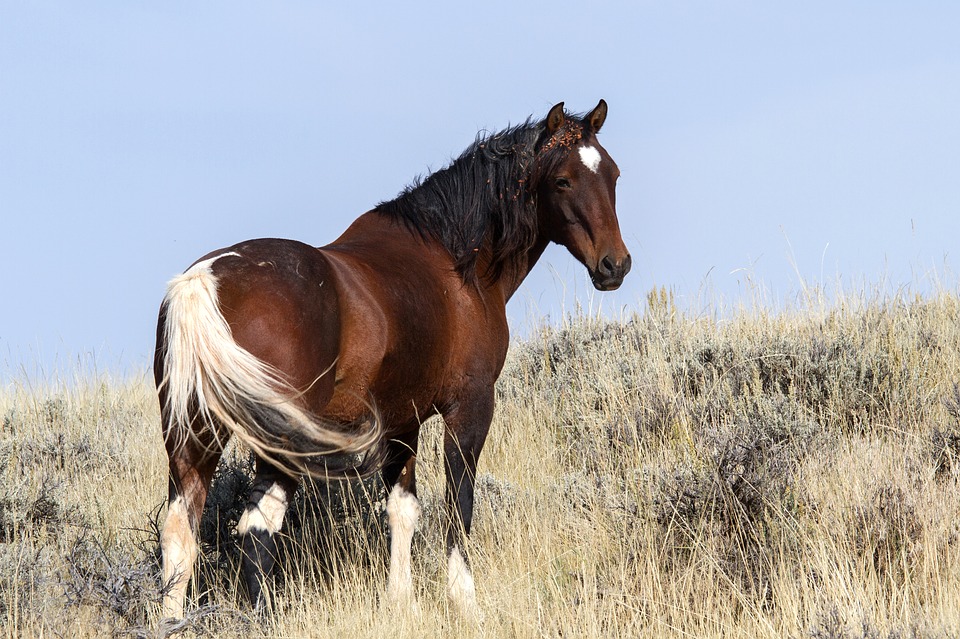
HOME ON THE RANGE
The issue isn’t unlike the debate over how to address the white tail deer population on the East End and Fire Island, where deer are symbolic, like wild horses symbolize the West.
Local deer and Western horses are often blamed for destroying public resources, but proposals to cull herds spark outrage among activists that argue it’s human encroachment on natural habitats causing the problem. What horses have that deer don’t is the law prohibiting the federal government from allowing wild horses to be killed—at least for the moment.
“It’s offensive to me, the idea of slaughtering these beautiful animals,” U.S. Rep. Tom Suozzi (D-Glen Cove) told reporters during a news conference in September outside CANA’s stable of 12 rescued horses before riding off on one. He’s working to block the plan in the GOP-controlled Congress, but faces an uphill battle as part of the Democratic minority.
BLM maintains that the horses are degrading the rangelands since the contraceptive program has proven ineffective at keeping the wild horse population in check. Horse advocates and others argue that BLM manufactured the mustang crisis by failing to properly implement the contraceptives and low balling the number of horses and burros that it says can be sustained by the 27 million acres of range land the agency manages.
The agency says the land can sustain 26,715 wild horses and burros—a third of what the government says is out there—although advocates say the animals aren’t overpopulated and starving, as Zinke and BLM claim. The National Research Council (NRC) questioned the validity of that number in a 2013 study examining BLM’s wild horse management program.
“Horse and burro populations are seldom limited by density because they are kept below food-limited carrying capacity through removals and to some extent with the contraceptive porcine zona pellucida (PZP),” the study found.
It also found that BLM’s cure for the horses may be worse than what ails them.
“Removals are likely to keep the population at a size that maximizes population growth rate, which in turn maximizes the number of animal that must be removed,” the report found.
Compounding the problem is the fact that only 2,440 wild horses were adopted out last year, when 2,899 more were removed. With removals consistently outpacing adoptions, the problem and its cost grows annually.
To Kalimian and others fighting for the horses, the issue is about more than animal rights, the environment or wasting taxpayer money. Advocates argue that millions of cattle graze the same land, suggesting that BLM is only interested in freeing up the range from competition for farming and drilling.
“It’s not right,” she says of the exploitation of the public’s natural resources for private gain. “The land belongs to the people, but only rich profiting off the land.”
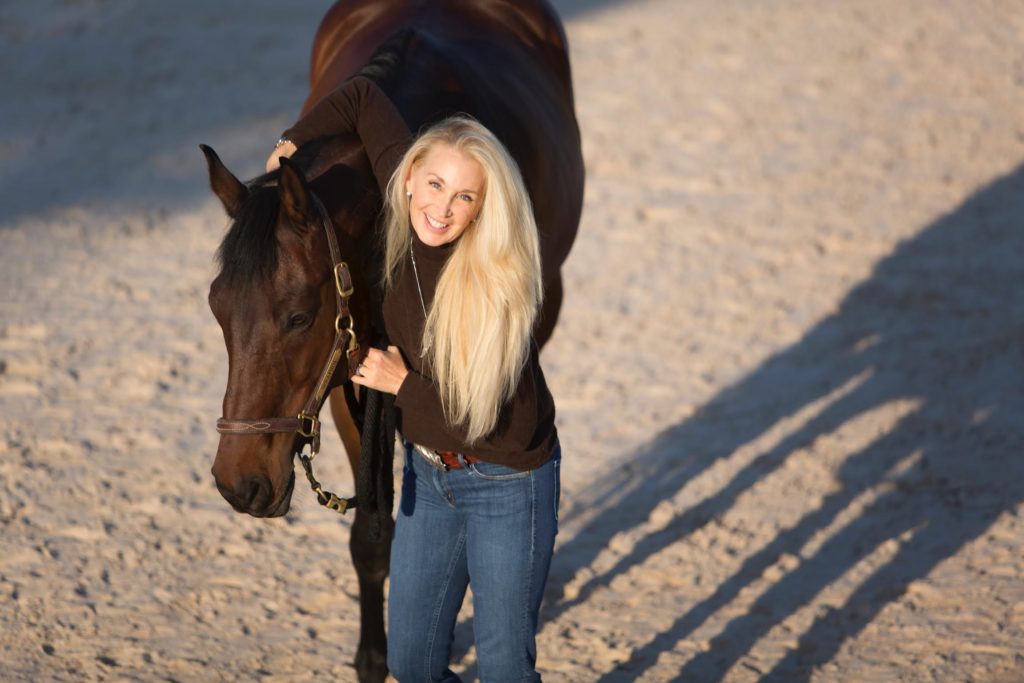
MUSTANG SALLY
Kalimian isn’t the only local advocate sounding the alarm of the issue. Others are also working to rescue wild horses—in addition to unwanted show, racing and other horses—before they’re destroyed.
Baiting Hollow Farm Horse Rescue has been urging people to contact their Congressional representatives to urge lawmakers to block passage of the horse slaughtering legislation. The North Shore Horse Rescue & Sanctuary in Baiting Hollow, which has about 30 horses, rescued their first horse, Phoenix, a five-year-old mustang mare, in 2003. And The Kaeli Kramer Foundation in Huntington has rescued two wild horses.
“All these horses are being held needlessly at the taxpayers’ expense,” wrote Brandon Woelkers of The Kaeli Kramer Foundation. “The round-ups are both cruel and unnecessary. There are humane ways to manage them on the ranges at half the cost to the American taxpayers.”
Such rescues are among 600 of their kind nationwide. Locally, they’re home to a fraction of the estimated 38,000 horses on LI. Kalimian expects to have her first rescued mustang join her stable of a dozen other horses she spared from the slaughterhouse.
Her group, founded in 2006 under the name Seraphim12 Foundation, was originally dedicated to rescuing abused and neglected horses, but a few years ago changed its name to the CANA Foundation and focused attention on the wild horse issue. Since then, CANA partnered with Native American tribes to facilitation their adoption of 60 wind horses on reservations. She also launched an organic, GMO-free skin care line called Naturally Considerate, with proceeds benefitting the nonprofit.
She says her mission is “rewilding” the horses, people and the land. That is, helping people reconnect with nature through horses. She even stopped mowing the lawn on the farm surrounding her stables and let it revert back to nature.
“We need to come together as one people…and remember who we are,” she says while reflecting on the therapeutic effect of horseback riding. “We need to remember what matters. The horses always show us what matters.”
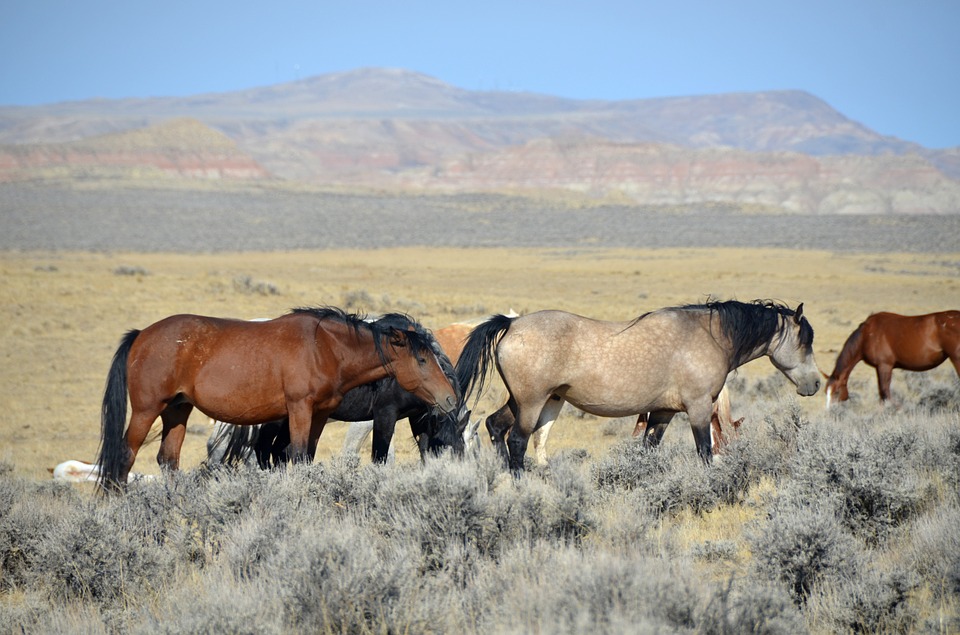
LONG ISLAND HORSE NONPROFITS
Amaryllis Farm Equine Rescue
864 Lumber Ln, Bridgehampton amaryllisfarm.com
Baiting Hollow Farm Horse Rescue
2114 Sound Ave., Baiting Hollow bhfhorserescue.org
CANA Foundation
Locust Valley. Canafoundation.org
The Kaeli Kramer Foundation
160 Sweet Hollow Rd., Huntington. kaelikramerfoundation.org
MJZ Horse Rescue Inc.
Manorville mjzhorserescue.com
New York Horse Rescue
PO Box 435, Manorville nyhr.org
North Shore Horse Rescue & Sanctuary
2330 Sound Ave., Baiting Hollow, northshorehorserescue.org
Spirit’s Promise Equine Rescue and Rehabilitation
2746 Sound Ave., Riverhead spiritspromiserescue.org




